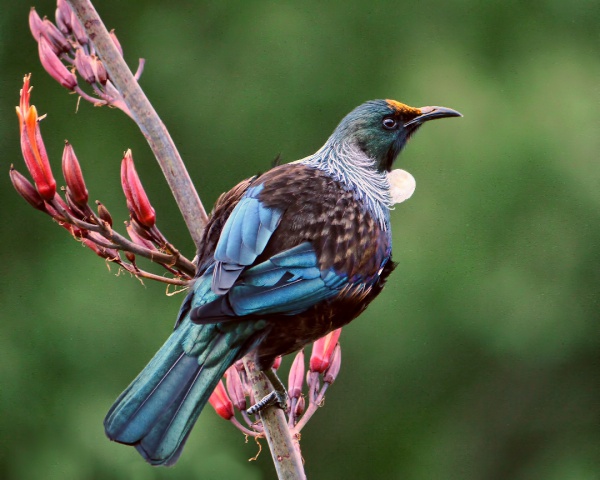Facts About Tui
The tui is a unique bird native to New Zealand and the sole member of its genus, Prosthemadera. It belongs to the Australasian honeyeater family, Meliphagidae, and is notable for being one of the largest birds within this diverse family. Tuis can be found throughout New Zealand, ranging from the subtropical Kermadec Islands to the chilly sub-Antarctic Auckland Islands, as well as on the mainland.
The name "tui" originates from the Māori language. These birds are easily identifiable by their striking combination of black, brown, and iridescent feathers, a distinctive tuft of white feathers at the neck, and a white patch on their wings. They are relatively large for honeyeaters, with males being larger than females.
Although tui populations have faced challenges due to habitat destruction and predators such as possums, cats, and rats, they are currently considered secure and are rebounding in some areas. Tuis prefer low-altitude broadleaf forests but are also commonly seen in urban settings.
Male tui are known for their aggressive behavior, particularly when defending their territory or favorite feeding spots. They have a loud and varied vocal range, producing complex songs and calls that can be reminiscent of parrots. Their diet primarily consists of nectar, but they also consume fruit, insects, pollen, and seeds.
During mating season, male tui perform impressive aerial displays. The females are responsible for building nests using twigs, grasses, and mosses. Tuis play a crucial role as pollinators for native plants like flax, kowhai, and kaka beak. Their vocalizations can vary by region, season, and individual, with some sounds even extending beyond the range of human hearing.
